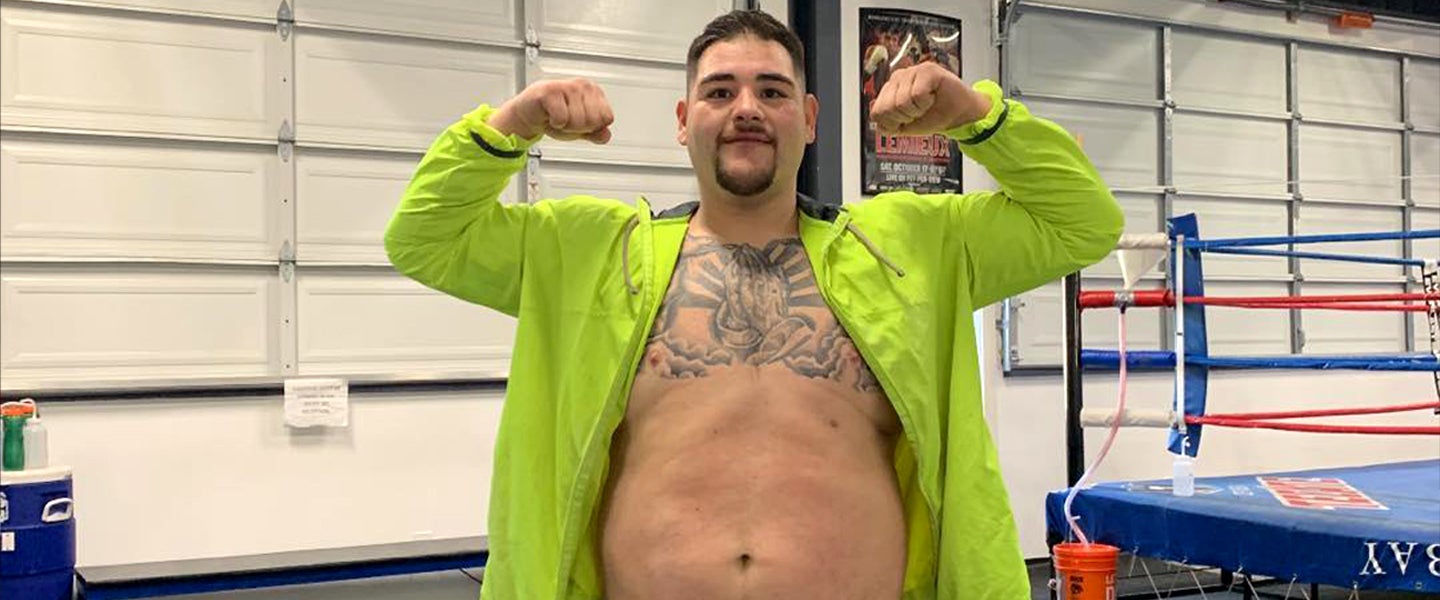On Saturday night, as the heavyweight title fight entered its seventh round, boxing superstar Anthony Joshua, having eaten yet another flurry of punches, fell to one knee. He staggered to the corner, where referee Michael Griffin watched him attempt to recover before calling the fight with a nonchalant wave of his right hand.
That was how underdog Andy Ruiz Jr. became the heavyweight champion of the world, reminding everyone watching that you should never ever underestimate a Thicc King — especially in the ring.
You may have noticed that Ruiz doesn’t necessarily look like a world champion. He stands at 6-foot-2 inches and weighs a stocky 268 pounds. In fact, compared to Joshua, who stands at an imposing 6-foot-6 inches and boasts 247 pounds of pure, cut-from-granite muscle, Ruiz looks more like a college dude who continued the Coors Light and Hot Pockets diet after graduation — not exactly a classic boxer, let alone the undisputed world champ.
But outward appearance clearly isn’t everything, since Ruiz and his unlikely body were more than capable of taking down what may as well have been Hercules reincarnate. In an attempt to explain how such immense power and stamina is hidden away within this deceptively doughy body, I reached out to several trainers.
Jonathan Jordan, a group instructor at Equinox Fitness, points to the specificity principle, which essentially states that exercising a certain component of the body primarily develops that part, hence how Ruiz can be so strong without necessarily looking buff. “This guy clearly trains and eats for strength, power and endurance, not to look shredded or muscular,” he says. “If he shed that body fat, he’d probably look shredded, but he probably doesn’t care about that and may not have the energy or stamina he needs to win.”
So how to get this world-dominating physique? Based on the specificity principle, we can theorize that Ruiz works more on his performance muscles than the ones that look good in the mirror, such as abdominals and biceps. Unlike show muscles, which generally look better than they operate, performance muscles provide stability, power and total body strength. These performance muscles are generally part of the posterior chain, which runs along the back of the body, and include the hamstrings, gluteus maximus and spinal erectors. For exercises that develop these muscles, squats, deadlifts and hyperextensions — basically all the exercise that powerlifters do on a regular basis — are good choices.
In the specific case of Ruiz, Jordan theorizes that his workouts probably focus on strength and power, which would mean he lifts heavier weights and does fewer reps of each exercise. As for how he eats, Jordan can’t comment, but he does suggest the Ruiz might be in calorie surplus, which simply means he consumes more calories than he burns, which would theoretically give him more energy.
To that end, certified personal trainer Jeff Jalaba says Ruiz could also simply carry more weight because of his genetics, but that extra weight might have worked to his advantage during this fight, since that fat could help him withstand more punches to the body. Jalaba also adds that achieving a body like this is largely a matter of taking in tons of calories and doing more high-intensity workouts, rather than drawn-out cardiovascular work. “It would probably tax his body so much to try to cut some of that natural fat down, and it would make him a worse fighter,” he explains. “He probably doesn’t try super hard to lose weight, but he tries to get better within that weight.”
Frankly, genetics is almost certainly what’s really at play here. “Ruiz has never looked like he was in shape since the day he was born,” says William Trillo, co-founder of acclaimed boxing blog Pound4Pound. “When he was three years old, he was just a fat little guy — that’s just the way it is. I’m sure when Anthony Joshua was five years old, he probably already looked better than most of us look now. It’s genetics — Ruiz is just not going to be body beautiful.”
“In every sport, you can kinda pick a guy who, no matter how hard they workout or whatever, they achieve some kind of world-class notoriety because they’re talented guys,” Trillo continues. “They’re really good.” As for Ruiz in particular, Trillo says, “He’s very fluid. He’s got great hand speed. He’s got good footwork. He has an intangible mindset, which apparently Anthony Joshua doesn’t have. The guy’s a fighter. He got knocked down. He got clocked, and he picked up his 270-pound body.”
Ruiz trains hard, too. “I’ve seen that guy workout,” Trillo continues. “He had on the plastic. He was sweating it out. He was working hard. There’s no way this guy doesn’t run. You’ve got to run. I mean, if you’re not running, you’re not winning.”
As for what the new champion is eating, Ruiz did mention that he had a Snickers bar before the fight, and Trillo says he’s not kidding. “He’s not eating boneless, skinless chicken breasts,” he explains. “I’m sure, at the same time, he’s not eating pizza, burgers and hot dogs every day. But he doesn’t mind choking down a Snickers bar before he gets into the ring, so there you go.”
The takeaway here is, if you ever find yourself going head-to-head against someone who looks more “bag of marbles” than “marble statue,” remember that they could very well be the next heavyweight champion of the world. That is, if you can remember anything after they erase that memory with 56 swift punches to the dome. Ouch.

